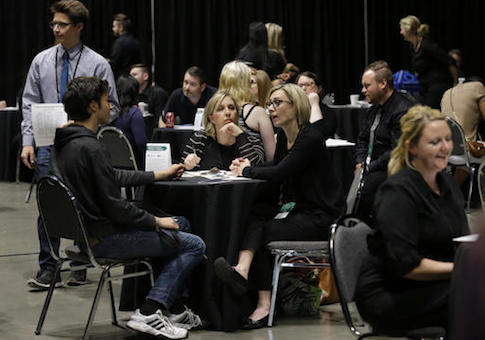There were 94,517,000 Americans not participating in the labor force in June, a decline of 191,000 people from the previous month, according to data released by the Bureau of Labor Statistics on Friday.
The bureau counts those not in the labor force as those who do not have a job and did not actively seek one in the past four weeks.
The labor force participation rate, which is the percentage of the population that has a job or actively looked for one in the past month, increased from 62.6 percent in May to 62.7 percent in June.
There was a record-high number of women 16 years and over not participating in the labor force in June. There were 56,855,000 women not in the labor force in June, an increase of 130,000 from the previous month. Their participation rate declined from 56.7 percent in May to 56.6 percent in June.
The unemployment rate for all Americans and for women increased from 4.7 percent in May to 4.9 percent in June. This measure does not account for those individuals who have dropped out of the labor force. The unemployment rate simply measures the percent of those who did not have a job but actively sought one over the month.
The "real" unemployment rate, otherwise known as the U-6 measure, was 9.6 percent, which declined from 9.7 percent from the previous month. Democrats such as Sen. Bernie Sanders (I., Vt.) and Federal Reserve Chair Janet Yellen have said this measure accounts for discouraged workers and those working part time instead of full time for economic reasons and is more representative of the labor market.
There were 5,843,000 Americans working part-time in June, but not by choice. This number declined by 587,000 over the month. According to the bureau, involuntary part-time workers are "persons who indicated that they would like to work full time but were working part time (1 to 34 hours) because of an economic reason, such as their hours were cut back or they were unable to find full-time jobs."
"Small business hiring has been mostly stagnant throughout 2016 with little movement in either direction from month to month," said National Federation of Independent Business chief economist William C. Dunkelberg. "Overall in June, the demand for labor weakened. Hopefully, with owners increasing compensation more people will be attracted back into the workforce and owners can find the labor that they have been searching for."
"Each month our survey shows that small business owners are trying to hire qualified workers," added National Federation of Independent Business president and CEO Juanita Duggan. "The job openings are there, but owners are not going to invest in new employment when labor costs are becoming insurmountable, and the political climate is wildly uncertain."
"Today’s jobs number can’t hide the ongoing struggles facing the country’s main jobs producers—small businesses—which are overwhelmed by overtaxation, overregulation, and a lack of access to credit," said president of the Jobs Creators Network Alfredo Ortiz. "And it shouldn’t distract us from an underwhelming labor force participation rate—still the lowest figure since the 1970s."
Update 12:08 p.m.: This article has been updated to reflect comment from Alfredo Ortiz.
